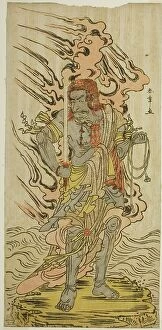Vairocana Collection
Vairocana, also known as the Great Sun Buddha, is a central figure in Mahayana Buddhism
All Professionally Made to Order for Quick Shipping
Vairocana, also known as the Great Sun Buddha, is a central figure in Mahayana Buddhism. Representing the cosmic essence of enlightenment and universal truth, often depicted sitting in meditation with a serene expression on his face. As the embodiment of wisdom and compassion, Vairocana serves as a guide for practitioners seeking to attain spiritual awakening and liberation from suffering. His radiant presence illuminates the darkness of ignorance and delusion, leading followers towards ultimate enlightenment. In Japanese Esoteric Buddhism, Vairocana is considered the supreme deity who encompasses all Buddhas and transcends all dualities. He symbolizes the interconnectedness of all beings and the unity of body, speech, and mind. Devotees invoke Vairocana's blessings through prayers, mantras, and visualizations to purify their minds and cultivate inner peace. By meditating on his formless nature or reciting his sacred texts, practitioners can connect with his boundless wisdom and experience profound insights into reality. Through devotion to Vairocana's teachings and practices, individuals can awaken their innate potential for enlightenment and embody his qualities of compassion, wisdom, and equanimity in their daily lives. May we all strive to embody the radiant presence within ourselves as we journey towards spiritual realization.

















